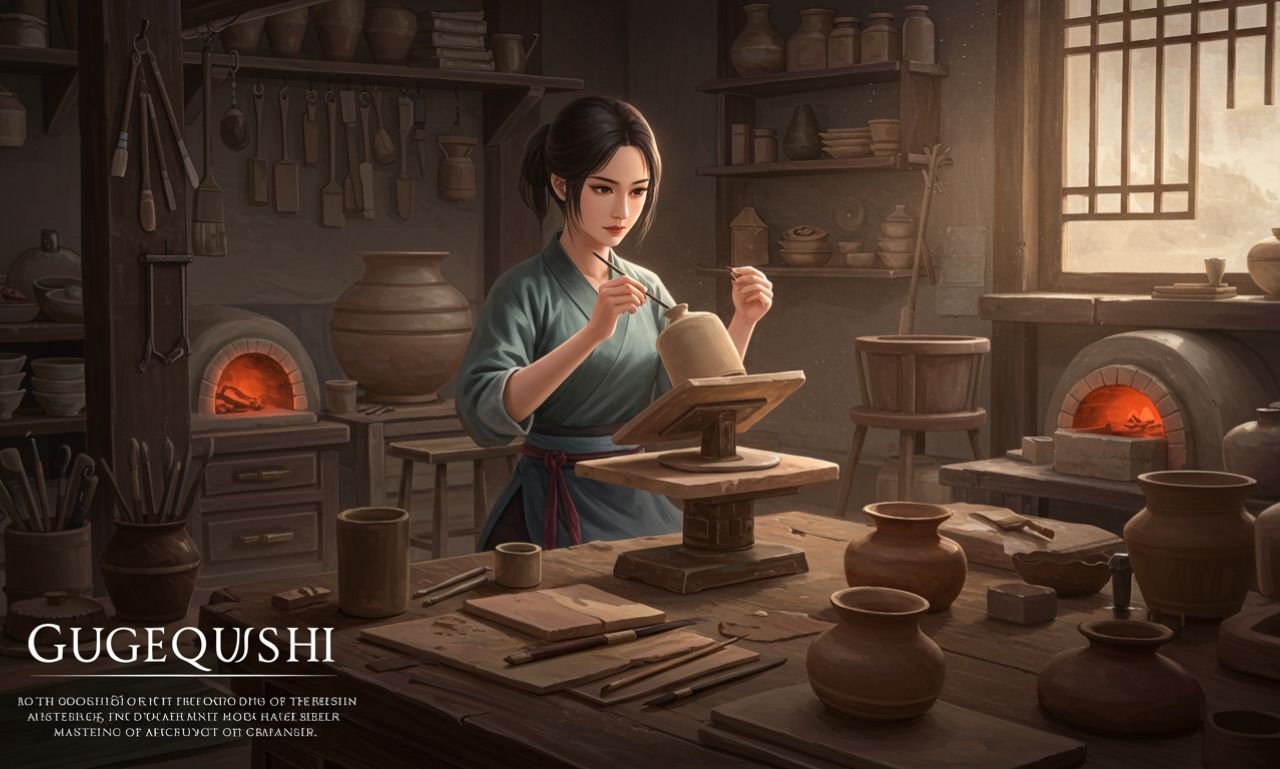Imagine a world where ancient craftsmanship meets modern creativity. Welcome to Gugequshi, a vibrant tradition that has stood the test of time. This remarkable art form weaves together history, culture, and skill in ways that captivate both artisans and enthusiasts alike. Originating from rich cultural roots, Gugequshi is more than just a craft; it’s an expression of identity and heritage.
As we delve into the fascinating tapestry of Gugequshi, you will uncover its origins, techniques, and significance in today’s rapidly changing society. Whether you’re an aspiring artisan or simply curious about traditional crafts, this journey promises to be enlightening. Prepare to explore the intricate world of Gugequshi where every piece tells a story waiting to be discovered!
What is Gugequshi?
Gugequshi is an ancient art form rooted in the rich traditions of craftsmanship. Originating from the Guge region, this unique practice encompasses various techniques that blend creativity with functionality.
At its core, gugequshi involves intricate methods of making everyday items using natural materials. Artisans often employ wood, textiles, and even clay to create stunning pieces that tell a story. Each item reflects the culture and values of its makers.
What sets gugequshi apart is its emphasis on sustainability. Craftsmen respect their environment while choosing resources thoughtfully. This not only preserves natural beauty but also fosters a deep connection between people and nature.
As modern society shifts towards mass production, gugequshi stands out as a celebration of individuality and heritage. It invites us to appreciate the artistry behind handmade creations crafted with love and skill.
The Techniques and Skills Involved in Gugequshi
Gugequshi involves a fascinating blend of techniques and skills that elevate it to an art form. Craftsmen start by selecting the right materials, often natural resources that reflect local culture and heritage.
Intricate handwork is key. Artisans use tools passed down through generations. These are not mere instruments; they carry stories and traditions within their grain.
Precision plays a vital role in every step, whether carving or weaving. Each motion requires focus, as even the slightest error can impact the final piece.
Color theory also comes into play. Understanding how colors interact enhances the beauty of each creation, allowing artisans to convey emotions through their work.
Storytelling is central to Gugequshi. Every item created isn’t just functional; it embodies history and cultural significance, making each piece unique in its narrative charm.
The Importance of Preserving Traditional Crafts
Traditional crafts serve as a bridge between generations. They carry the stories, techniques, and values of our ancestors. Each handcrafted piece is a testament to cultural identity.
Preserving these skills helps maintain community bonds. Artisans share knowledge with apprentices, fostering connections that transcend time. This exchange enriches both the mentor and learner.
Moreover, traditional crafts promote sustainability. They often utilize local materials and eco-friendly methods, standing in stark contrast to mass production’s environmental impact.
In today’s fast-paced world, slowing down to appreciate craftsmanship brings joy and mindfulness. It encourages us to value quality over quantity.
As we support artisanship, we preserve diversity in expression and innovation within our communities. Embracing these traditions can inspire new creations while honoring their roots.
The Modern Applications of Gugequshi
Gugequshi is not just a relic of the past; it finds relevance in contemporary settings. Artisans are incorporating its techniques into modern design, creating unique pieces that resonate with history.
Fashion designers have embraced gugequshi methods to craft textiles and accessories, blending traditional aesthetics with today’s trends. This fusion attracts a younger audience eager for authenticity.
Interior decorators also utilize gugequshi-inspired elements in their work. From intricate carvings on furniture to decorative wall art, these influences add depth and character to spaces.
Moreover, educational institutions are recognizing the importance of teaching gugequshi techniques. Workshops and courses empower new generations to keep this ancient craft alive while innovating upon its core principles.
Social media platforms showcase artisans at work, inspiring enthusiasts worldwide. Virtual communities foster collaboration among those passionate about reviving and reinventing gugequshi for modern tastes.
Learning the Art of Gugequshi: Where to Start?
Embarking on the journey to learn gugequshi is exciting and rewarding. Start by immersing yourself in its rich history and cultural significance. Books, documentaries, or online resources can provide invaluable insights.
Next, seek out workshops or community classes that specialize in traditional crafts. Hands-on experience with skilled artisans will deepen your understanding of techniques.
Networking within craft communities is essential too. Joining forums or social media groups dedicated to gugequshi opens doors to mentorship opportunities.
Don’t forget practice; it’s key to mastering any craft. Set aside time each week for focused training and experimentation with different materials and tools.
Consider visiting museums or cultural centers showcasing gugequshi artifacts. Observing these works firsthand can inspire your own creations while highlighting the craftsmanship involved in this ancient art form.
Success Stories of Gugequshi Masters
Across the world of Gugequshi, numerous artisans have forged their paths to success. These masters exemplify dedication and passion for ancient techniques.
Take Wang Ming, for instance. He revived traditional weaving methods that had nearly vanished. His commitment to authenticity garnered recognition at international craft fairs, inspiring a new generation.
Then there’s Li Mei, who combined modern aesthetics with classic designs. Her unique approach attracted collaborations with designers in fashion and interior decor. She bridges the gap between tradition and contemporary art.
Another notable figure is Zhang Wei, known for his intricate woodwork. His pieces tell stories rooted deep in cultural heritage. People seek out his work not just as art but as history preserved through craftsmanship.
These artisans showcase how Gugequshi can thrive today when blended with creativity and innovation while honoring age-old practices.
Conclusion
Gugequshi stands as a testament to the enduring spirit of craftsmanship. Its rich history and intricate techniques reflect not only artistic skill but also cultural significance. As modernity continues to influence traditional practices, the importance of preserving Gugequshi becomes ever clearer.
Whether you are an aspiring artist or simply someone who appreciates art, exploring this ancient craft can be a rewarding journey. With various resources available and success stories that inspire, diving into Gugequshi is more accessible than ever.
As we celebrate these timeless skills, let’s carry forward the legacy of Gugequshi for future generations to admire and learn from. Embracing such traditions enriches our understanding of artistry and its place within culture today.

